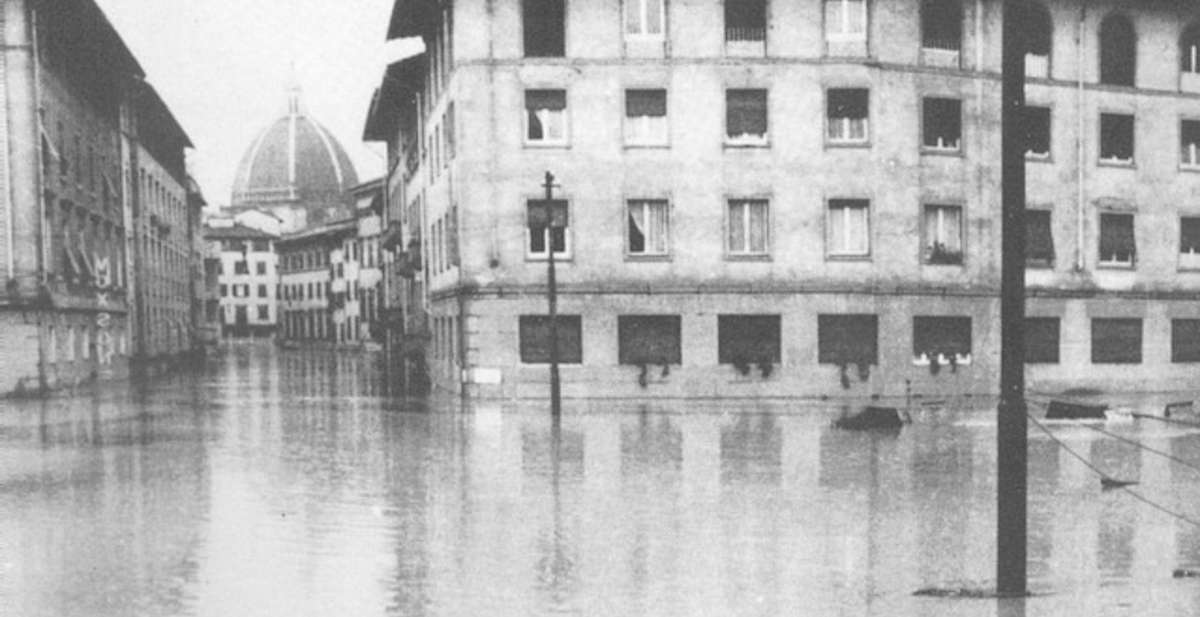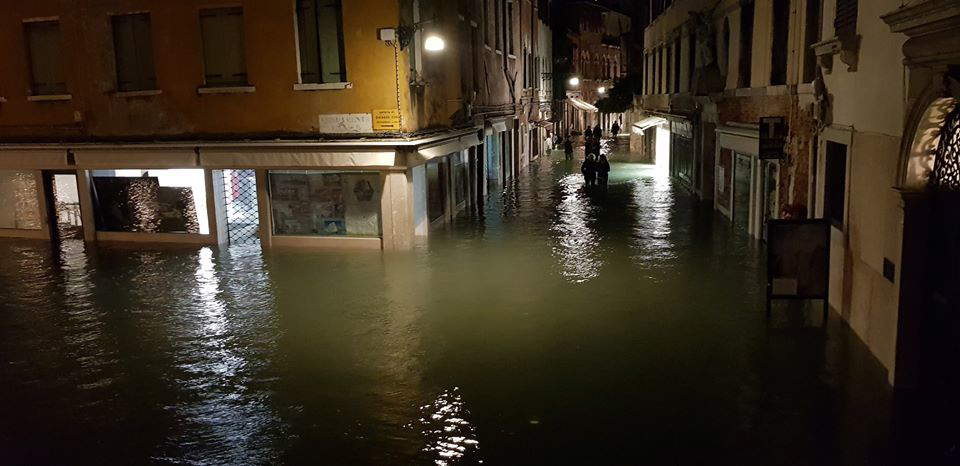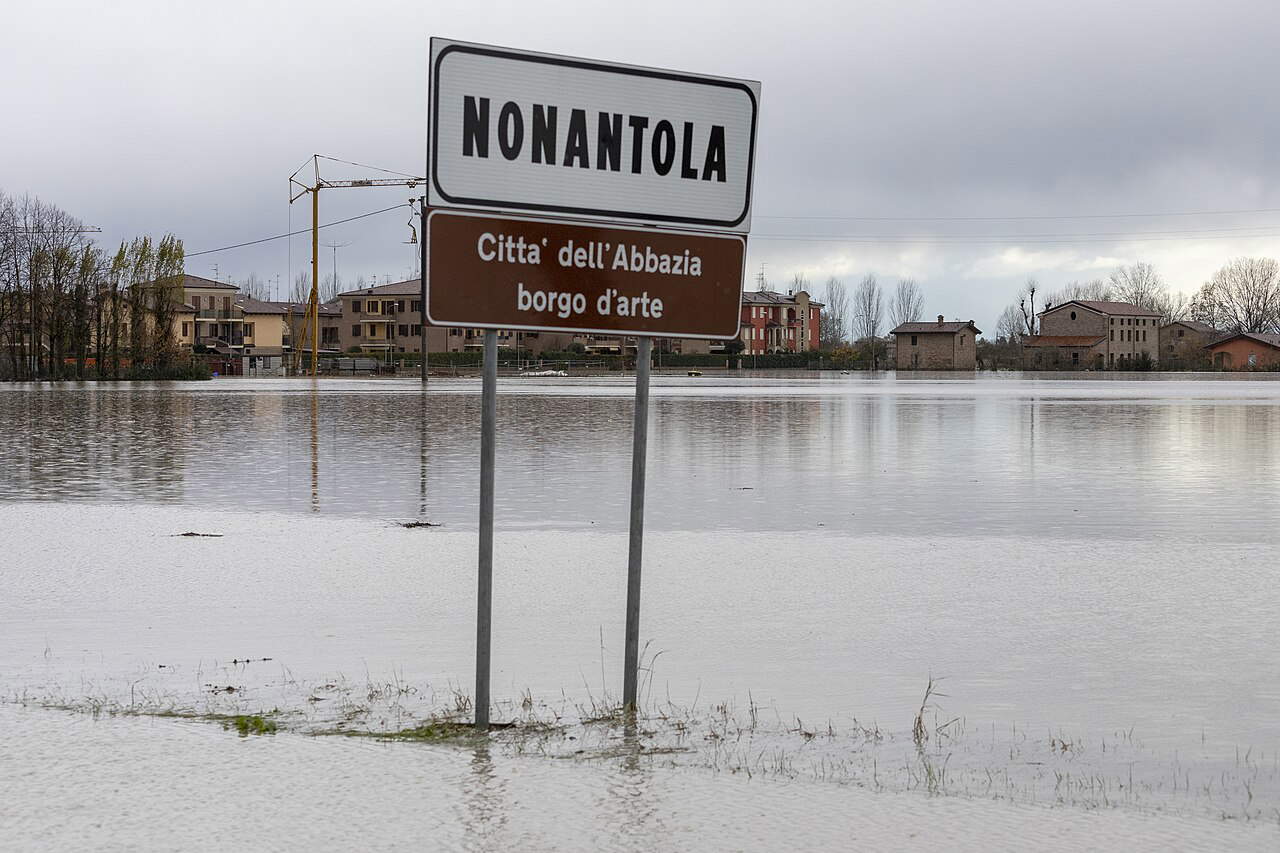The flood of skills: a story that starts with conservation
In the face of the environmental tragedies that increasingly strike Italy - these days the fourth flood in two years in part of Emilia, including Bologna - with deaths, missing people, thousands homeless, hundreds of millions in damages and so on, I think it is useful to make a history of how all this could happen. A history that can be started on November 4, 1966 when the Arno overflowed in Florence and sent one of the most important historical and artistic heritages in the West underwater. A heritage that also includes 230 panel paintings of different sizes and various provenances from the city’s churches whose conservation poses a very complex technical problem that the Central Institute for Restoration solves in an entirely innovative way. In fact, they decide by its director Pasquale Rotondi and his deputy Giovanni Urbani that those paintings soaked in muddy water should not be subjected to restoration, to do so would have meant damaging them irreparably, but should be worked on without touching them. What the Icr does by arranging for them to be slowly and programmatically dehumidified. So they had the enormous Limonaia of the Boboli Gardens equipped with an air-conditioning system designed by the Institute of Technical Physics of the University of Rome, in the persons of Gino Parolini and Marcello Paribeni, and they had the 230 tables housed in it, maintaining theinside the Limonaia an ambient relative humidity rate such as to avoid too rapid drying of the painted boards and to bring back the water content of the wood from 100% to a physiological 10%.
An intervention that was completed in a few months with a perfect conservation result and that became the direct precedent of that “programmed and preventive conservation of the artistic heritage in relation to the environment,” that is, of that action that was to be the radical innovation brought by the Icr in the material protection of the artistic heritage and that found its application in the “Pilot Plan for the preventive and programmed conservation of the cultural heritage in Umbria” presented in Perugia in 1975. Pilot plan whose implementation was immediately violently opposed by superintendents, professors and politicians because it was a “dangerous” project. Dangerous not because of its having been aimed by Rotondi, Urbani to create an increase in the bureaucratic power of its actors, but because to carry out a well-defined and concrete project for the protection of the artistic heritage that obliged ministerial officials to work in close collaboration with scientific bodies and universities not only Italian and also taking advantage of the help of the research laboratories of industry. In the case those of Eni, which essentially still was the one with a public purpose created by Enrico Mattei. Eni, which, in the case, founded an engineering company, Tecneco, to give methodological and organizational support to the Pilot Plan of which, moreover, Rotondi and Urbani had foreseen (another danger) of the very reduced time and cost for its implementation: 24 months and 1,400 million old lire (today 8.8 million euros). Hence to have promptly ignored that project the Ministry of Cultural Heritage, founded at that same time by the Florentine journalist turned politician Giovanni Spadolini, eluding, shall we say, him and his advisers, that planned conservation in relation to Rotondi and Urbani’s environment was (and remains) the only protective action to be able in concrete terms to safeguard the Italian artistic heritage in the quality that makes it unique in the world: its infinite, ultramillennial and marvelous stratification on the territory. Hence the merciless judgment given by Sabino Cassese on the new Spadolinian ministry at the very moment of its presentation in December 1974, calling it “an empty box that does not indicate a new policy and does not contain a reform of the legislation of protection.” While Luigi Covatta, who was Undersecretary of that Ministry and who has the no small merit of having promoted the only political action in line with planned conservation in relation to the environment, the creation of a “Risk Charter,” spoke of it as the only Ministry in Republican Italy “founded during the Christmas vacations.”

Why this long introduction to talk about the Emilia-Romagna floods? For a very simple reason. Namely, that the “danger” of having to deal with how to actually carry out an organizational work based on impeccable technical-scientific data did not only concern the material conservation of the heritage, but also touched on the politics of the territory. In fact, on June 29, 1973, Eni presented in Urbino the “First National Report on the Environmental Situation of the Country,” an initiative born under the auspices of the Prime Minister’s Office, coordinated by the Minister for Scientific and Technological Research and closed by the then President of the Republic Giovanni Leone. First report that in its three volumes, plus a final one of thematic cartography, collects a vast research work sponsored by political and scientific organizations of absolute international relevance such as the UN, OECD, CEE, MIT, Nasa and whatnot, with which it addresses some of the main points of crisis that the environment had begun to show in the main in the main industrial countries of the world due to the very rapid economic development that took place after World War II. Environmental aggression that also affects Italy, but in a very different way from any other nation. That is, by affecting an artistic heritage that has no comparison in pervasiveness and historical and cultural importance with any other place in the world. What explains the reason why an entire section of that “First Report” is dedicated to “Cultural Heritage” entrusting its elaboration to the Icr, then an undisputed point of reference in the world, and calling Urbani, in the meantime passed on to direct the Icr, to coordinate a research work that focused on the state of conservation of the Italian heritage and its evolutionary trend in the period 1969-1972. On the other hand, he was in charge of the technical-scientific and organizational part relating to environment and ecology again by Eni and again through Tecneco. The result is a programmatic document that is as usual strongly “dangerous” for politics. The three points I quote immediately below from that “First Report” suffice. Points in which they put forward methodical directions that have never been implemented and talk about problems that are still entirely relevant today and, as usual, unsolved as inexorably demonstrated by the floods from which we started. Three points in which it was planned to work:
-
An outline assessment of the nature and extent of the main drivers of environmental change (so-called “natural” factors, production activities, consumption activities), with possible disaggregations at both sectoral and regional levels;
-
an analysis of the current state of the main environmental “systems” identifiable in the country (high mountains; forests and woodlands; parks and nature reserves; lagoons and brackish ponds; inland waters; coastal strips; areas of intensive agriculture; areas of metropolitan concentration; heritage of cultural assets);
-
an illustration of the activities and actions adopted in 1972 for the defense of the environment by the organs of the State (Parliament, Central Government, Judiciary), Regions and Local Authorities, businesses, Universities, research centers and other operators; with reference to legislative and regulatory activity, developments in jurisprudence, public and private spending trends, scientific research, university teaching and mass information activities, and agreements, conventions and initiatives of an international nature;
Nor technocratic solutions, as some might say given that the foundation of thought given to the environmental issue is linked “to the need for a harmonious composition of the inalienable requirements of the protection of ecological balances on the one hand, and the availability of environmental services (of all kinds: productive, recreational, cultural, scientific) on the other.” A general principle that triggers the danger of making the environmental system work by forcing politics to exercise species expertise and enforce its dictates. Suffice it to say that one of the proposals in that “First Report” was to create an “environmental accounting” so as to exercise general control over public spending on environmental protection action, thus also on the protection of the artistic heritage. But in spite of the unquestionable quality of the research work produced by both the Umbrian Plan and the “First Report,” everything is dropped into oblivion. And here it should perhaps be remembered that all this was happening on the heels of the “68” movement, which saw politics as an action of direct democracy, the “imagination in power,” to quote only one of the many childish slogans then shouted in the streets. So that in order not to lose sight of the vast and unwitting electorate that stood on those positions between humoral, amateurish and sadly comical, at the time of the presentation in Urbino of the First Report even Giovanni Berlinguer took the field, who intervened by stating that:


“Thus, the function of the public enterprise [in the case of Eni] cannot be what was configured in the First Report: if it ’wants to take the place of the regions and municipalities in outlining spatial planning or managing indivisible community assets such as soil and water,’ if the public enterprise wants to ’become an environmental agency of the state,’ it will encounter from political and cultural forces from regional powers, from within the public administration itself, insurmountable opposition.”
An intervention that largely comments on itself and finds support in academia. In fact, an Etruscologist from the University of Perugia ventures to publish in “l’Unità” an article of great violence and equal paucity of scientific content with which he thus crushes the Umbrian Icr Plan:
“The Umbria Pilot Plan has revealed itself in its two volumes to be of very low cultural level and largely uninformed. In fact it is a precise attack on the proposals put forward by the forces of the left, and in particular by our [Italian Communist] party, for a more democratic management of the cultural heritage (...). In essence, it entrusts technocratic forces [Tecneco] - albeit connected with public capital [Eni] - with the management of protection: the operation represents a crude maneuver, devoid of any cultural foundation, to hand over entire slices of the public operating space to private groups in the name of a crude managerial ideology.”
Pronouncements of future revolutions that have unfortunately been followed up in political actions whose organizational and technical-scientific results are today for all to see, and which appear particularly unacceptable in Emilia because this should have been the model of how the left, once it arrived at the government of Italy, would have governed it. A government of the Emilia territory that, in actual fact, has operated as all Italian public administrations have done. That is, by ditching streams and ditches that then regularly burst flooding those who had built their homes with regular permits, by cementing hundreds of square kilometers of agricultural land, that is, in more recent years, in order to recover the green electorate, it did not control the “Amazonian reforestation” of the Apennines, then fostered increasingly uncontrollable landslide movements, failed to clean riverbeds favoring their overflow and all the rest of which Marcello Colitti, a close associate of Mattei and a man of Catholic education who was the head of Eni’s Office of Studies in the years First National Environmental Report, told us about half a century ago:
“All it took was the ten minutes of Giovanni Berlinguer’s speech at the opening of the ’First Report on the Environment’ to wreck everything. That is, to mark the act of death of Eni’s attempt to win an institutional role in ecology. A great deal of work and a quality team turned out to be wasted. The report on the problems of ecology in the country was never redone, and ’Tecneco,’ the company that had been specially created within the Snam Progetti framework to deal with those problems, failed before it was born. Since then, the Italian ecological discourse has lacked [and continues to lack] a fundamental element: a surveying and processing center that has the means to operate and the technical and business capacity, as well as credibility with the public.”
Warning: the translation into English of the original Italian article was created using automatic tools. We undertake to review all articles, but we do not guarantee the total absence of inaccuracies in the translation due to the program. You can find the original by clicking on the ITA button. If you find any mistake,please contact us.



























